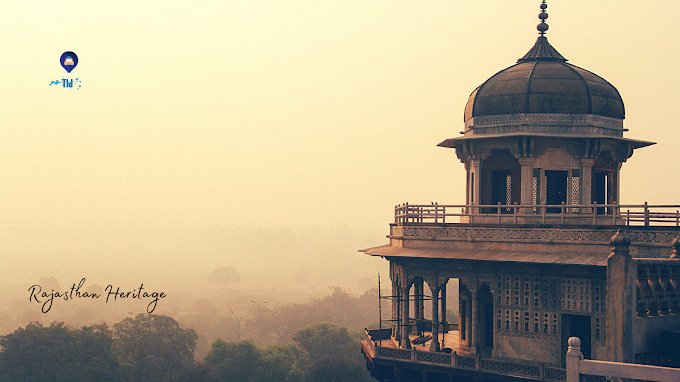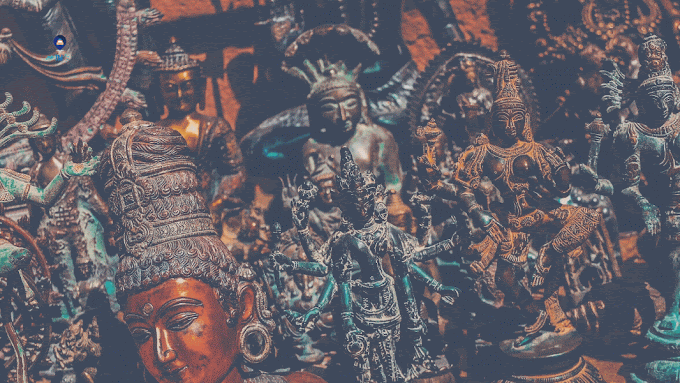The Introduction
The time period "Rajput" comes from rajaputra, which means "son of kings." Rajputs are famed for his or her preventing capabilities and once dominated several Indian princely states. The British grouped a lot of those states into the Rajputana Province. Today, it is the Indian state of Rajasthan.
Want to travel to Rajasthan then do Check out Taxi in Jodhpur to getting more details.
Most believe Rajputs come from tribes in primary Asia such as the Parthians, Kushans, Shakas, and Huns. These corporations entered India as conquerors and became kings or rulers. They frequently married high-caste Hindu ladies or transformed to Hinduism.
1206) who defeated them at the second struggle of Tarain, close to Delhi. This firmly established Muslim strength and ended Rajput dominance. The handiest Rajput kingdoms that might assignment Mughal rule were those inside the superb Thar Desert.
In the eighteenth century, many Rajput states got here under the control of Marathas and, by the early nineteenth century, the British. Many Rajput kings retained a status as rulers of princely states below the British.
Folklore
Many folktales describe Rajput exploits. In one story, a ksatriya (warrior) extended family chief decided to kill all Brahman (priest and pupil) guys after getting to know a Brahman had killed his father. This meant Brahman women needed to marry ksatriya guys and gave upward push to various Rajput dynasties. In some other story, gods created some ksatriya clans on Mount Abu in Rajasthan to assist fight Buddhists and foreigners. These Rajputs were called the agnikula ("hearth-race") and were the ancestors of clans consisting of the Chauhan, Solanki, and Ponwar Rajputs.
Religion
Most Rajputs are Hindu. They had been recognized for shielding Hinduism in opposition to Buddhism and Islam. Today, of their spiritual practices, Rajputs range little from different high-caste Hindus. They use Brahmans (monks and students) for ceremonial and formality purposes. They worship all major Hindu deities. Most Rajputs are devotees of the god Shiva. In addition, nearly each Rajput extended family has its personal purchaser god to whom it turns for protection.
Rites of Passage
Rajputs have a good time fundamental stages in life with twelve ceremonies known as karmas.
When a boy is born, a circle of relatives Brahman (member of the highest social class) information details for the toddler's horoscope. An own family barber informs family and pals of the birth, and there's a whole lot celebration. The Brahman chooses a good day to call the infant. When the kid is about two years old, a head-shaving ritual takes region. Many Rajputs regard the delivery of a daughter as a misfortune and observe the day with the little rite.
As demise techniques, a sick person is located on a bed of sacred kusa grass on a spot that has been rotated by means of cow dung. A sprig of the tulsi plant, a bit of gold, or a few drops of Ganges River water is located within the mouth to put off messengers of Yama, god of death. A cow is introduced to the facet of the dying man or woman so that he or she will grasp its tail and be carried adequately to the other globe. After dying, the corpse is washed and organized for cremation. The frame is located on a funeral pyre, dealing with the north. The eldest son lights the hearth, and later cracks open the cranium so the soul can depart the frame.
Living Conditions
Rajputs historically formed landowning lessons. In the past, Rajput rulers of princely states such as Kashmir, Jaipur, and Jodhpur have been acknowledged for their exquisite courts. Rajput Maharajas (kings) frequently lived luxuriously in ornate palaces. After India's independence, but, the princes lost their titles and privileges.
In Rajput homes, guys' quarters encompass a courtyard containing a platform approximately 4 to six ft (approximately one to two meters) excessive, reached by way of a series of steps and frequently shaded by timber. Men often gather on these systems to talk and possibly smoke the hukka (a pipe). At one cease of the platform is a roofed porch. Men typically sleep in the back of this porch. Smaller aspect rooms are used for storage.
Women's quarters are enclosed by way of partitions, with rooms dealing with an internal courtyard. A hearth is built towards one wall for cooking. Stairs offer to get admission to the roof. The interconnecting roofs of the houses let Rajput ladies visit every other without being seen with the aid of men.
Family Life
A different feature of Rajput society is its clans. More than 103 clans were recognized in all. Among the more critical ones are the Chauhans, whose former capital became Ajmer; the Gehlots of Mewar; the Authors of Marwar; and the Kachhwaha of Jaipur.
Rajputs marry outside their clan. They also try to marry their daughters into clans of better rank than their own, at the same time as accepting daughters-in-law from clans of decrease rank.
Rajput marriages are organized. Marriages are events for brilliant rite and feasting. The groom, observed by way of buddies and relatives, rides in a Barat (procession) to the bride's residence. Mounted on a horse, he's wearing colorful robes, with turban and sword. Sometimes, he rides a decorated elephant. Gifts and cash are dispensed to those who collect. A piece of material is tied to the brink of the bride's sari and groom's coat. The couple walks around a sacred fireplace while Brahmans (monks and pupils) chant prayers. This is known as Agni puja (fireplace-worship ceremony). Several days of celebration comply with.
In 1303, whilst the citadel of Chitor in Rajasthan turned into about to fall to Muslims, the Rajput Rani and all of the women within the citadel burned themselves to demise to avoid being taken, prisoners. Despite ample folklore surrounding this subculture, it was by no means extensively practiced.
Culture Heritage
India's Rajput heritage is colorful. Rajputs are visible as champions of Hindu dharma (religion). They have left a sturdy mark on India, especially in Rajasthan. Members of the Bhat caste maintain a circle of relatives' information and may hint a Rajput family tree to a clan's legendary ancestors. Member of the Charan caste report deeds and accomplishments of Rajput rulers. Rajput courts have been centers of tradition wherein literature, track, dance, painting, and sculpture flourished with aid of the Rajput elite. A particular style of Rajput painting—regularly that specializes in religious subject matters, portraiture, or miniatures—emerged at Rajput courts within the Himalayas (the Pahari school) and in the western desolate tract (the Rajasthani faculty). Bardic literature consisting of Prithviraj Raso recounts deeds of Rajput heroes. Mira Bai, a poet born inside the fifteenth century, become a Rajput princess who's recognized for her contributions to Hindu bhakti (devotional) literature.
Rajputs built irrigation canals, dams, and reservoirs. The stunning temples at Khajuraho had been built within the tenth and eleventh centuries, and a few Rajput companies built many famous temples in Gujarat and western Rajasthan. Many palaces and forts represent a pleasant combo of Hindu and Muslim architectural patterns. Among the extra super are forts at Chitor, Gwalior, and Jodhpur, and the Palace of the Winds in Jaipur. Maharaja Jai Singh II of Jaipur built astronomical observatories in Jaipur and Delhi inside the early eighteenth century.
Craft and Hobbies
Rajput people's traditions encompass string puppet shows and ballads told through touring storytellers known as bhopas. Before he does so, he guarantees the woman he's going to defend her cows. Soon after the wedding ceremony has began, Pabuji learns that the thieves are making off with the cows. He leaves his wedding to preserve his word and recovers all however one calf. He dangers some other warfare for the calf and is killed through the enemy. His bride then leaves her handprint on the gate of Pabuji's house and commits sati (burns herself to dying, a saintly act in Rajasthan).
Stay Tuned






0 Comments